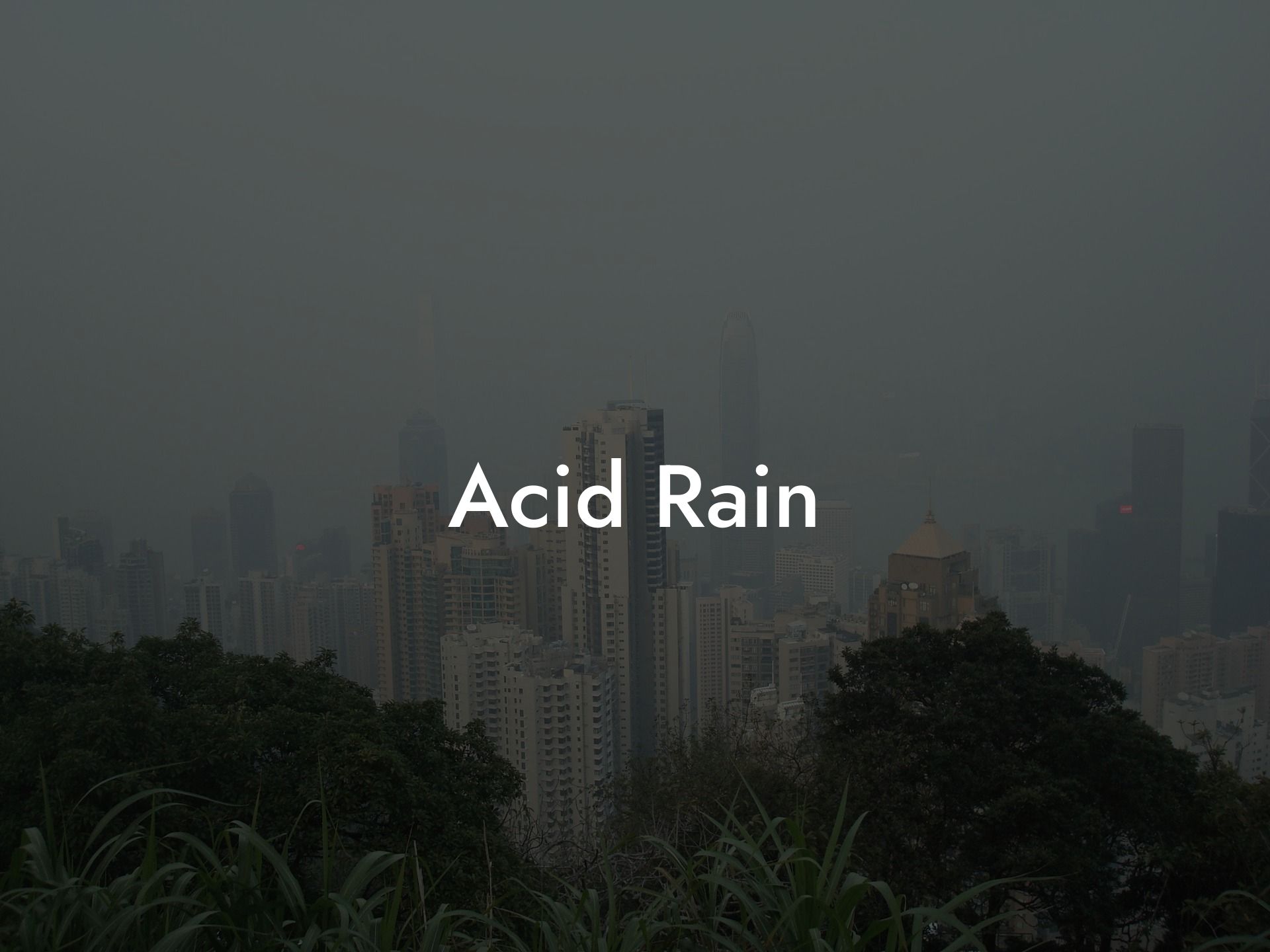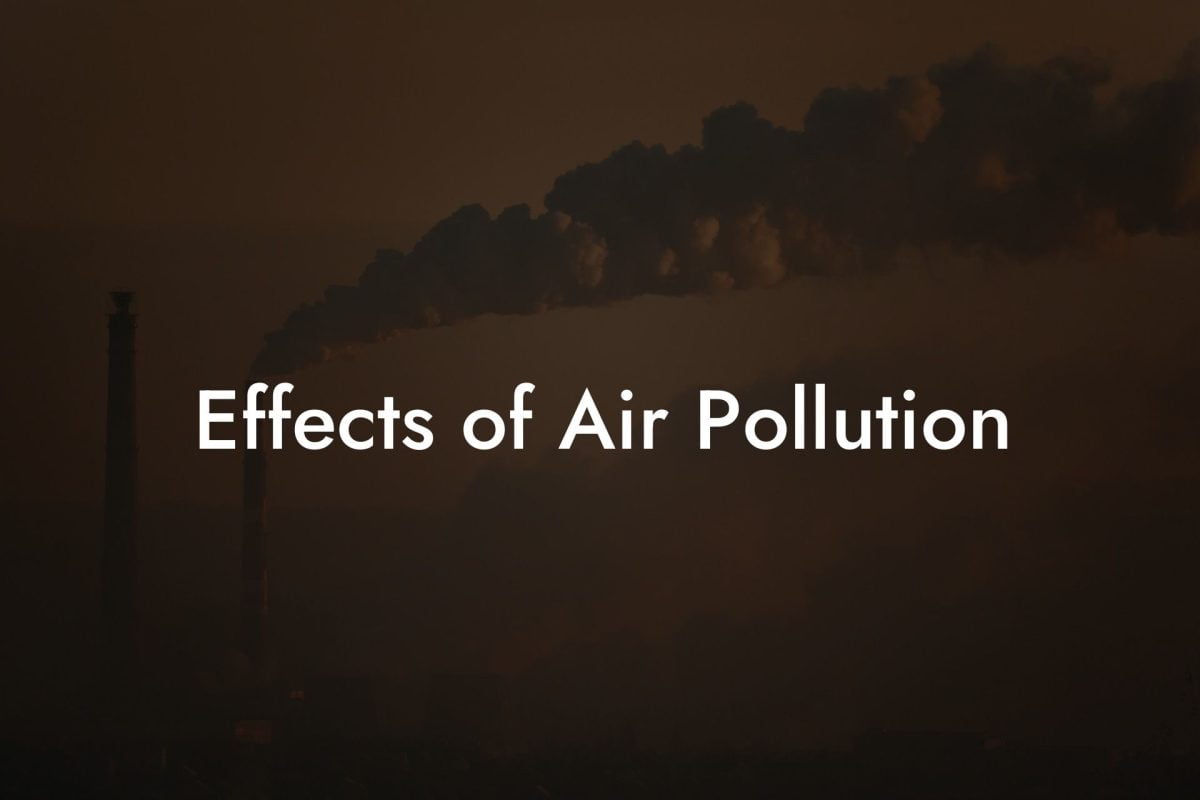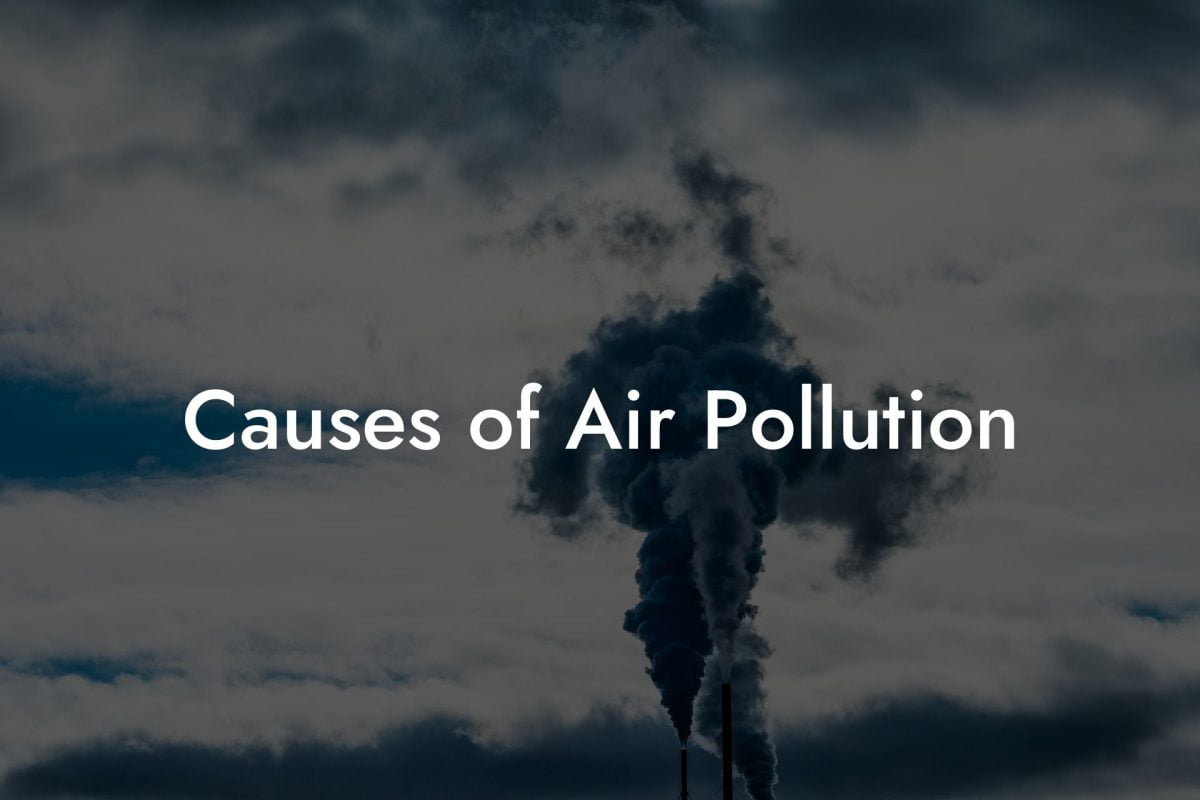Introduction to Acid Rain
Acid rain is a serious environmental problem that occurs when emissions of sulfur dioxide (SO2) and nitrogen oxides (NOx) react with the water, oxygen, and other chemicals in the atmosphere to form acidic compounds. This phenomenon has far-reaching effects on our environment and health.
What is Acid Rain?
Acid rain refers to a mix of wet and dry deposition from the atmosphere containing higher than normal amounts of nitric and sulfuric acids. The term encompasses not only rain but also snow, fog, and dust particles.
Causes of Acid Rain
Industrial Emissions
The primary source of the sulfur and nitrogen compounds that lead to acid rain is from fossil fuel combustion at power plants and other industrial facilities.
Vehicle Emissions
Emissions from vehicles, particularly diesel engines, significantly contribute to the nitrogen oxide content in the atmosphere.
Natural Sources
Although less significant, natural sources like volcanoes and wildfires also contribute to the emissions that cause acid rain.
Impact on Human Health
Respiratory Issues
While acid rain does not directly harm humans, the pollutants that cause it can lead to respiratory problems, such as asthma and bronchitis.
Toxic Metals
Acid rain can mobilize toxic metals in the soil, which can enter the human food chain, posing additional health risks.
Environmental Effects of Acid Rain
Water Bodies
Acid rain causes the acidification of lakes and streams, harming aquatic life and disrupting ecosystem balance.
Forests
It damages forests, especially at higher elevations where the acidic fog and clouds strip nutrients from the leaves and soil.
Soil
Acid rain alters soil chemistry, depleting essential nutrients and releasing harmful aluminum, adversely affecting plant growth.
Buildings and Monuments
Acidic precipitation can corrode buildings, monuments, and sculptures, particularly those made of limestone and marble.
Monitoring and Controlling Acid Rain
Stricter regulations on SO2 and NOx emissions are crucial in reducing acid rain. These include emissions trading programs and fuel-use changes.
Technological Solutions
Installing scrubbers on power plant smokestacks and using cleaner forms of energy can significantly reduce emissions.
The Role of Individual Actions
Energy Conservation
Reducing electricity usage and using energy-efficient appliances can decrease the demand for fossil fuels.
Transportation Choices
Using public transportation, carpooling, and using electric vehicles can reduce vehicle emissions.
Acid Rain Research and Data
Scientific Studies
Continuous research is essential for understanding the full impact of acid rain and developing effective strategies to combat it.
Monitoring Networks
Monitoring networks are vital in tracking acid rain patterns and determining the effectiveness of regulations.
Comprehensive Acid Rain Database
UK Air Pollution offers an extensive collection of data on acid rain across all UK locations and postcodes, making it an invaluable resource for anyone needing detailed information on this issue.
Why Choose UK Air Pollution?
Our platform is the ultimate blend of professionalism, energy, and informative content. We are dedicated to providing comprehensive insights into acid rain, making it accessible for research, policy-making, or personal education.
Enhancing Environmental Understanding and Solutions
With UK Air Pollution, gain in-depth knowledge about acid rain, aiding your research projects, environmental initiatives, or educational endeavors.
Frequently Asked Questions
What is Acid Rain?
Acid rain refers to a mix of deposited material, both wet and dry, coming from the atmosphere containing higher than normal amounts of nitric and sulfuric acids. It can encompass rain, snow, fog, hail, or even dust that is acidic.
How is Acid Rain Formed?
Acid rain is formed when sulfur dioxide (SO2) and nitrogen oxides (NOx) are released into the atmosphere and react with water, oxygen, and other chemicals to form sulfuric and nitric acids. These then mix with water and other materials before falling to the ground.
What are the Main Causes of Acid Rain?
The primary causes of acid rain are emissions of sulfur dioxide and nitrogen oxides from power plants, factories, and vehicles that burn fossil fuels like coal, oil, and natural gas.
Why is Acid Rain Harmful?
Acid rain can have severe impacts on forests, freshwaters, and soils, killing insects and aquatic life-forms, causing paint to peel, corrosion of steel structures, and erosion of stone statues and buildings.
What are the Effects of Acid Rain on Lakes and Streams?
Acid rain can make lakes and streams acidic and unsuitable for many fish and other aquatic life. It can also deplete nutrients in soil and water bodies necessary for aquatic life.
How Does Acid Rain Affect Forests?
Acid rain can damage forests, especially those at higher elevations. It depletes nutrients in the soil, damages leaves and bark, and makes trees more susceptible to disease and harsh weather.
What are the Effects of Acid Rain on Human Health?
While acid rain does not directly affect human health, the sulfur dioxide and nitrogen oxides that cause acid rain can lead to respiratory problems and exacerbate heart and lung diseases.
Can Acid Rain Affect Buildings and Monuments?
Yes, acid rain can cause deterioration of buildings, statues, and monuments, especially those made of limestone and marble as these materials can be greatly damaged by acid rain and related pollutants.
How is Acid Rain Measured?
Acid rain is measured using a pH scale. Pure water has a pH of 7, and anything below 7 is acidic. Acid rain typically has a pH between 4.2 and 4.4.
What Can Be Done to Reduce Acid Rain?
Reducing acid rain involves cutting the emissions of sulfur dioxide and nitrogen oxides. This can be achieved by using cleaner forms of energy, installing scrubbers on power plant smokestacks, and using catalytic converters on cars.
Are There Regulations to Control Acid Rain?
Yes, many countries have laws and regulations to control emissions of sulfur dioxide and nitrogen oxides, including the U.S. Clean Air Act and the European Union's Large Combustion Plant Directive.
What is the Role of Government in Combating Acid Rain?
Governments play a crucial role in combating acid rain by setting and enforcing emission standards, investing in research, and promoting policies and practices that reduce air pollution.
How Can Individuals Help Reduce Acid Rain?
Individuals can help by conserving energy, using energy-efficient appliances, reducing vehicle use, and supporting policies and practices that aim to reduce air pollution.
What is the Environmental Impact of Acid Rain Beyond Lakes and Forests?
Acid rain can also harm agricultural crops, degrade soil quality, and result in bioaccumulation of toxins in the food chain, impacting various forms of wildlife.
Can Acid Rain Be Neutralized?
Acid rain can be partially neutralized by the environment, especially in limestone areas where the rock can neutralize the acidity. However, this process can lead to other environmental issues, like the leaching of harmful substances into water bodies.
What are the Economic Impacts of Acid Rain?
Acid rain can lead to significant economic costs, including damage to buildings and historic monuments, reduced agricultural yields, and increased healthcare costs due to respiratory-related illnesses.
How Does Weather Influence Acid Rain?
Weather conditions can greatly influence the formation and distribution of acid rain. Wind can blow SO2 and NOx far from their source,
affecting areas that do not produce these pollutants, while rainfall can wash these pollutants from the atmosphere, resulting in acid rain.
What's the Difference Between Acid Rain and Normal Rain?
Normal rain is slightly acidic with a pH around 5.6, due to the presence of CO2 which forms carbonic acid in rainwater. Acid rain, however, has a pH less than 5.6 due to sulfuric and nitric acids from human activities.
Can Plants and Wildlife Adapt to Acid Rain?
Some species may be able to adapt to acidic environments; however, acid rain can disrupt ecosystems by changing soil chemistry and reducing biodiversity. Many plants and wildlife species are sensitive to changes in pH and cannot survive in more acidic conditions.
How Does Acid Rain Affect Aquatic Ecosystems?
In aquatic ecosystems, acid rain can lead to a decrease in pH, making waters acidic and unsuitable for fish and other wildlife. It can also leach aluminum from soil into waterways, which is toxic to aquatic life.
Is Acid Rain Still a Problem Today?
While efforts to reduce sulfur dioxide and nitrogen oxides have been successful in many regions, acid rain remains a problem, particularly in parts of Eastern Europe, Southeast Asia, and North America.
What Are Some Long-Term Solutions to Acid Rain?
Long-term solutions include transitioning to renewable energy sources, improving energy efficiency, increasing public awareness, and international cooperation to reduce SO2 and NOx emissions on a global scale.
How Has International Cooperation Contributed to Addressing Acid Rain?
International agreements like the U.N. Framework Convention on Climate Change and protocols under the UNECE Convention on Long-Range Transboundary Air Pollution have played key roles in reducing emissions that cause acid rain.
Can Technology Help in Solving the Acid Rain Problem?
Yes, advancements in technology such as flue-gas desulfurization, low-NOx burners, renewable energy sources, and electric vehicles can significantly reduce emissions of sulfur dioxide and nitrogen oxides, thereby mitigating acid rain.














